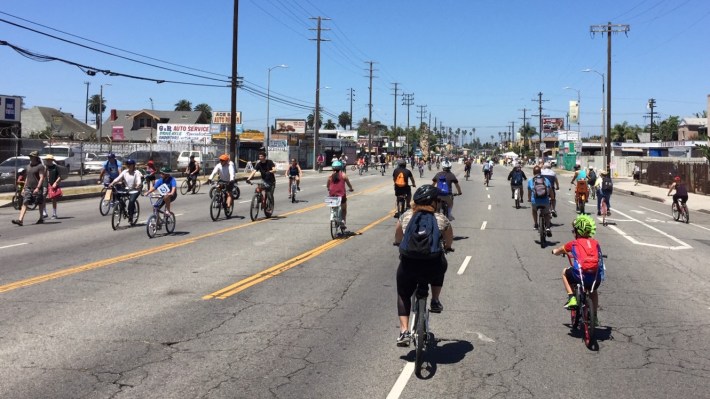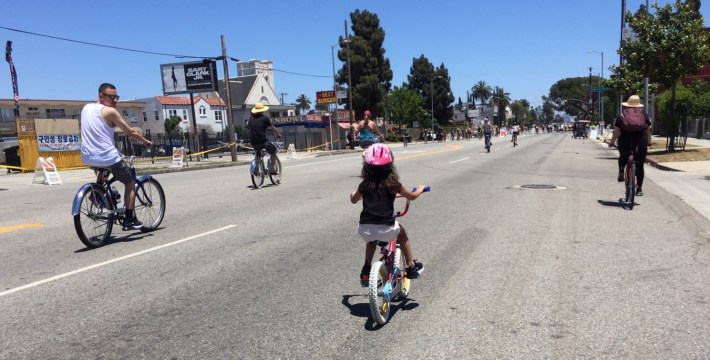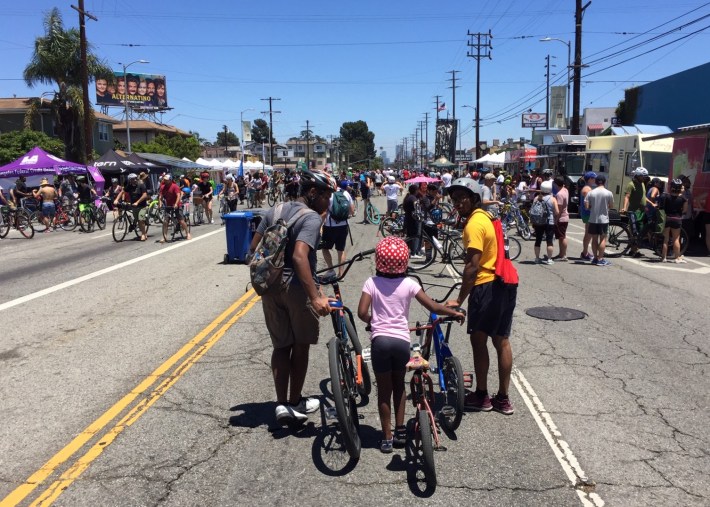The Federal-Aid Highway Act under the Eisenhower administration, the biggest public works program in U.S. history, dramatically altered the American landscape. Over 40,000 miles of highway sliced up cities, leveling neighborhoods and fueled urban sprawl and white flight to the suburbs, while tying the American imagination to the personal vehicle and the open road. As Michael Patrick F. Smith eloquently put it in a recent op-ed in the New York Times, “Lewis and Clark had navigated their way up North America’s many natural rivers; after the Federal-Aid Highway Act, Americans would negotiate the country on rivers of oil… cars powered by the petrochemical gasoline, over roads built by petrochemical asphalt. Oil became the boat and the river.”
Our car-centric culture was further ingrained in 1982 by a piece of policy that, while less visible, was no less influential in shaping our current reality. The Highway Revenue Act which, under President Reagan, raised the gas tax by five cents, allocating one penny to transit and the rest to highways, establishing the 80/20 split that exists to this day—a funding structure that guarantees a robust and growing highway system and the sorely under-funded public transportation we now have nationwide.

However, advocates believe the stars have aligned so that 2021 could be a historic year for shifting the transportation funding imbalance and, just maybe, the master narrative about mobility in the U.S. Reauthorization of federal funding for surface transportation, which comes up for renewal once every five years, happens this September, coinciding with a new Secretary of Transportation Pete Buttigieg, who voices support for transit; a new Future of Transportation Caucus founded by Illinois congressional rep Chuy Garcia; and an administration which, thanks to national movements for racial equity, acknowledges that public transit is both a racial and climate justice issue.
Last week, New York-based non-profit Riders Alliance hosted a virtual teach-in explaining the history of transportation funding, the current law about to expire, the push for federal parity, and why this year is, in the words of Transportation for America policy director Scott Goldstein, a once-in-a-generation opportunity.
Goldstein presented a brief history of surface transportation funding in the U.S. and a snapshot of current budget allocations. Under the 80/20 split, about $12 billion is guaranteed for public transit annually, mostly for maintenance projects. This may sound like a lot, but it isn’t nearly enough. The current backlog of capital maintenance for transit nationwide is in the neighborhood of $90 billion. Here in Chicago, it’s about $12.5 billion. $2.3 billion is available for new transit projects annually, but these dollars aren’t guaranteed. Furthermore, the federal government covers 80 percent of highway projects, but only half the cost of transit projects, which incentivizes highway construction and places a tremendous financial burden on municipalities wishing to expand their transit systems.

Goldstein said the goal of transit parity, as resolved by Garcia and 32 members of the House in December, is equal funding—not taking money away from roads, but boosting transit funding to match. The bill would create a fourfold increase in funding that would make a significant dent in the maintenance backlog and provide money for expansion projects and investment in updated equipment, like the purchase of zero-emission electric buses.
Libero Della Piana, senior organizer with New York-based Alliance for a Just Society, followed with a presentation about the need for a national campaign for transit justice. Della Piana acknowledged that the goals are ambitious and achieving parity is unlikely this year, but a strategy of aiming high could significantly move the funding needle during this window of opportunity.
“We’re not going to have a bill in congress to vote for fifty-fifty funding,” he said. “It’s not a policy, it’s a handshake agreement. What’s likely going to happen is we’re going to have to fight to get this or as close to it as we can in the proposal. Chuy’s bill will be important to put parity on the agenda, but the way we get to parity, may not be to say parity.”

Della Piana’s presentation focused on power—where it is held and how to concentrate it through coalition building across sectors and aligned interest groups, advancing the message that “if you breathe air, pubic transit is good for you.” He also understood the important role of soft power, diplomacy and storytelling in changing policy. “Part of the reason we have this 80/20 split is that in the American narrative, highways are about freedom,” he said. “The opposite idea is public transit is broken down, dirty, no fun, inconvenient. That narrative creates a funding situation that makes it reality. We need to change that narrative. We need to avoid the idea that we’re against highways or car drivers, that we need to tear down highways to have public transit.”
Della Piana and Goldstein also said President Biden’s $1.9 trillion economic rescue plan, which includes $30 billion for public transportation, could signal a sea change in prevailing attitudes about scarcity and national debt, setting the tone for long-term investment in transit. “Because of last year and the depths of the crisis, we’ve had huge relief bills out of necessity and we know more is coming,” Della Piana said. “There’s more of an appetite…in order to build back better we’re going to have to invest, not only in how things were, but in the future.”







